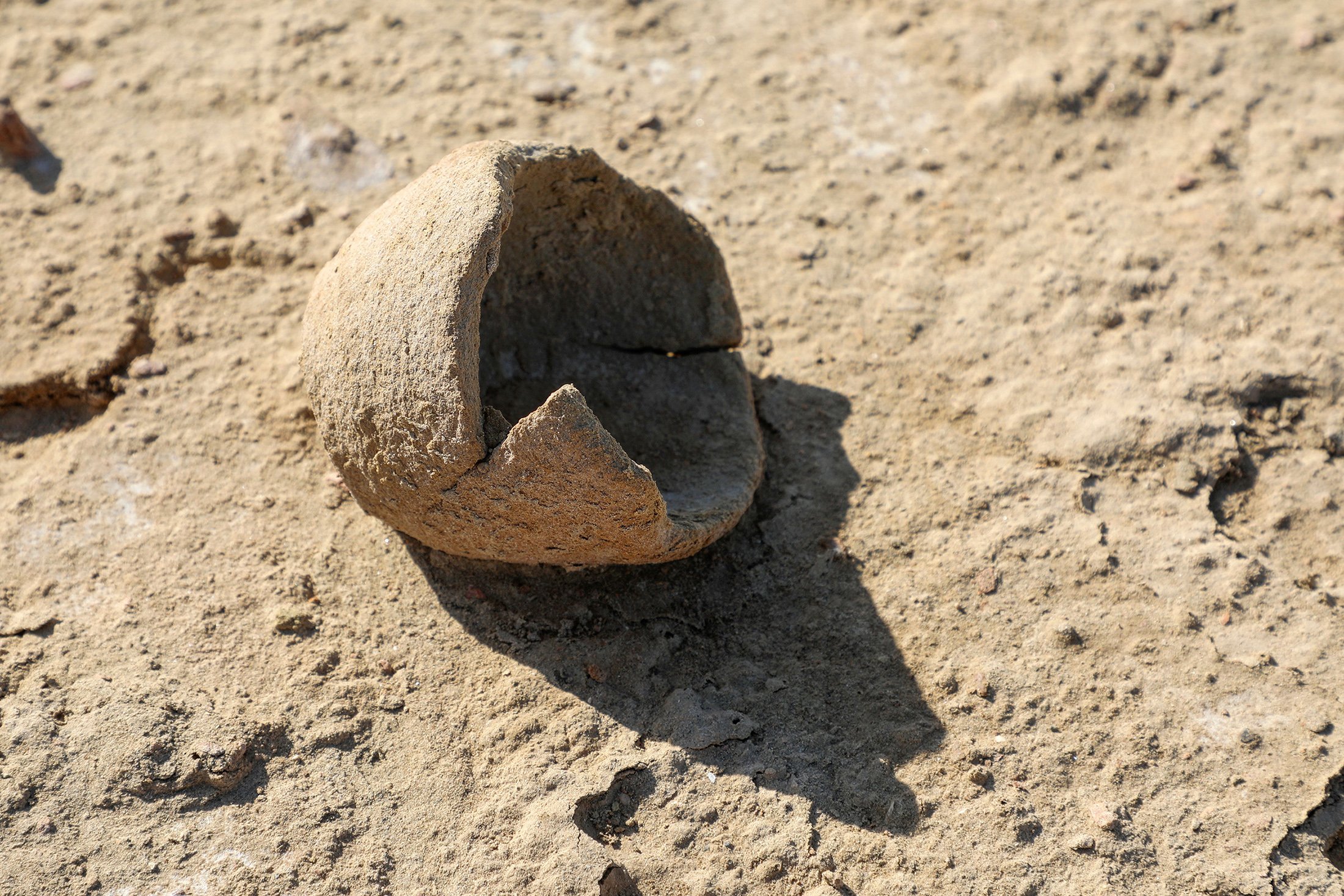
A team of U.S. and Italian archaeologists digging in southern Iraq have unearthed the remains of an ancient tavern, dating back to 2,700 B.C.
Excavated as part of a joint project by the University of Pennsylvania and the University of Pisa over the fall of 2022, the site is a small rectangular room that opens directly onto a courtyard. Across its plaster floor were strewn about 36,965 shards of ceramic bowls and beakers—some of the pottery even containing residue of food and drink, including fish bones. A number of shelves and benches along a wall further pointed to what might have been a “public eatery” with open-air seating.
Pottery fragments found at the site. Photo: Asaad Niazi / AFP via Getty Images.
The same room also housed two large jars, one placed inside the other, representing what appears to be a primitive cooling device for beverages. According to Reed Goodman, one of the University of Pennsylvania archaeologists, the brick remains of a “large oven” were also located, containing ashy deposits of “various burning episodes.”
“We’ve got the refrigerator, we’ve got the hundreds of vessels ready to be served, benches where people would sit… and behind the refrigerator is an oven that would have been used for cooking food,” Holly Pittman of the Penn Museum, University of Pennsylvania told AFP.
The array of artifacts, she added, has led the team to believe the place to be “where people—regular people—could come to eat and that is not domestic.”
An aerial picture of the excavated site. Photo: Asaad Niazi / AFP via Getty Images.
The find was made in Lagash, an ancient city east of Al-Shatrah, Iraq. Located between the Tigris and Euphrates rivers, the area was a major center of the early dynastic Sumerian civilization, known for their advanced agricultural and writing systems, and architectural projects such as the Girsu temple complex.
That the archaeologists deemed the site to be that of a “tavern” is down to the Sumerians’ preference for the beverage, “even more than water,” said Pittman. She further pointed to the discovery of “a beer recipe,” inscribed on a cuneiform tablet, at an excavated temple close by.
The team emphasized that while previous digs in the area have focused on uncovering religious or royal architecture, its current excavations are intended to provide a better understanding of the lives of the everyday, non-elite citizens. The aim, it stated, was to learn about the “urban social fabric of Lagash.”
“We hope to be able to characterize the neighborhoods and the kinds of occupation… of the people that lived in this big city who were not the elite,” said Pittman.
“The fact that you have a public gathering place where people can sit down and have a pint and have their fish stew, they’re not laboring under the tyranny of kings,” Goodman added. “Right there, there is already something that is giving us a much more colorful history of the city.”